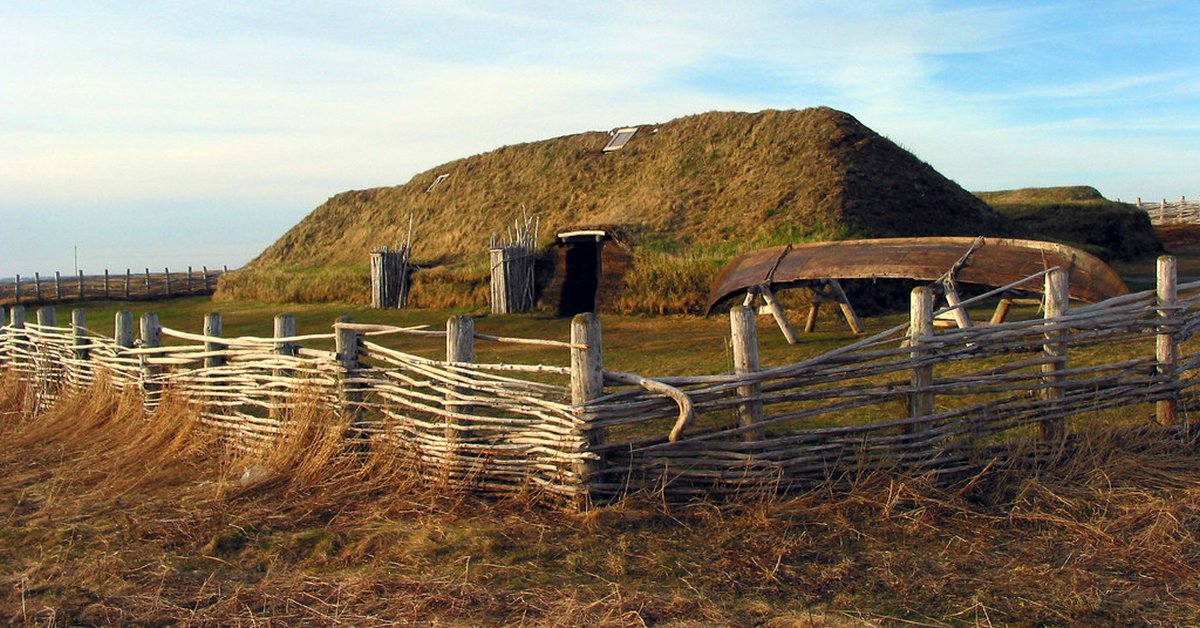As physical evidence for early European presence in the Americas can be found in Newfoundland, Canada, we have known for a while that transatlantic exploration from Europe took place centuries before the crossing of Columbus. However, it has not been possible to determine when this activity took place – until now.

Vikings from Greenland – most probably the first Europeans to arrive in the Americas – lived in a village in today’s Newfoundland, Canada, exactly 1,000 years ago, according to a study published in Nature.
Scientists have discovered many years ago that Vikings built a village at today’s L’Anse aux Meadows in Newfoundland around the turn of the millennium. But the new study is the first to pinpoint the date of the Norse occupation, NBC reports.
The explorers – up to 100 people, both women and men – felled trees to build the village and to repair their ships, but so far, we didn’t know when exactly that happened.

According to the new research findings, the Vikings cut down at least three trees in the year 1021 – providing evidence that they were in America at least 470 years before Christopher Columbus reached the Bahamas in 1492.
“This is the first time the date has been scientifically established,” said lead author Margot Kuitems, an archaeologist at the University of Groningen in the Netherlands.
“Previously the date was based only on sagas — oral histories that were only written down in the 13th century, at least 200 years after the events they described took place,” she said.
The first settlers in Greenland were from Iceland and Scandinavia, and so the new evidence represents the first known point at which humans encircled the globe.
They didn’t stay in America for long though. The research findings suggest that the Vikings stayed at L’Anse aux Meadows for three to 13 years before they abandoned the village and returned to Greenland for good.

The archaeological remains of the settlement are now protected as a historic landmark and is listed as a World Heritage Site by UNESCO.
But how did the scientists find out when the Vikings were there? The key to the exact date was a spike in a naturally radioactive form of carbon detected in ancient pieces of wood from the site: some cast-off sticks, part of a tree trunk and what appears to be a piece of a plank.
Since indigenous people occupied L’Anse aux Meadows both before and after the Norse, the research team had to make sure that each piece of wood had distinctive marks showing it was cut with metal tools – something the indigenous people did not have.
Radiocarbon dating is not a new thing and archaeologists have long relied on it to identify an approximate date for organic materials such as wood, bones and charcoal. However, this study used a technique based on a global “cosmic ray event” (probably caused by massive solar flares at the time) to determine an exact date.

Previous research has established that there was such a cosmic ray event in the year 993, causing greater than usual levels of radioactive carbon-14 in the carbon dioxide of the atmosphere for a few months during that year.
Trees “inhale” carbon dioxide as they grow, and so the researchers used that radioactive carbon signature to determine which of the annual growth rings seen in cross-sections of the wood was from 993, Kuitems explained.
Then, they simply used a microscope to count the later growth rings until they reached the bark of the wood, which finally gave them the exact year the tree had stopped growing – that is, when it was felled by the Vikings.
